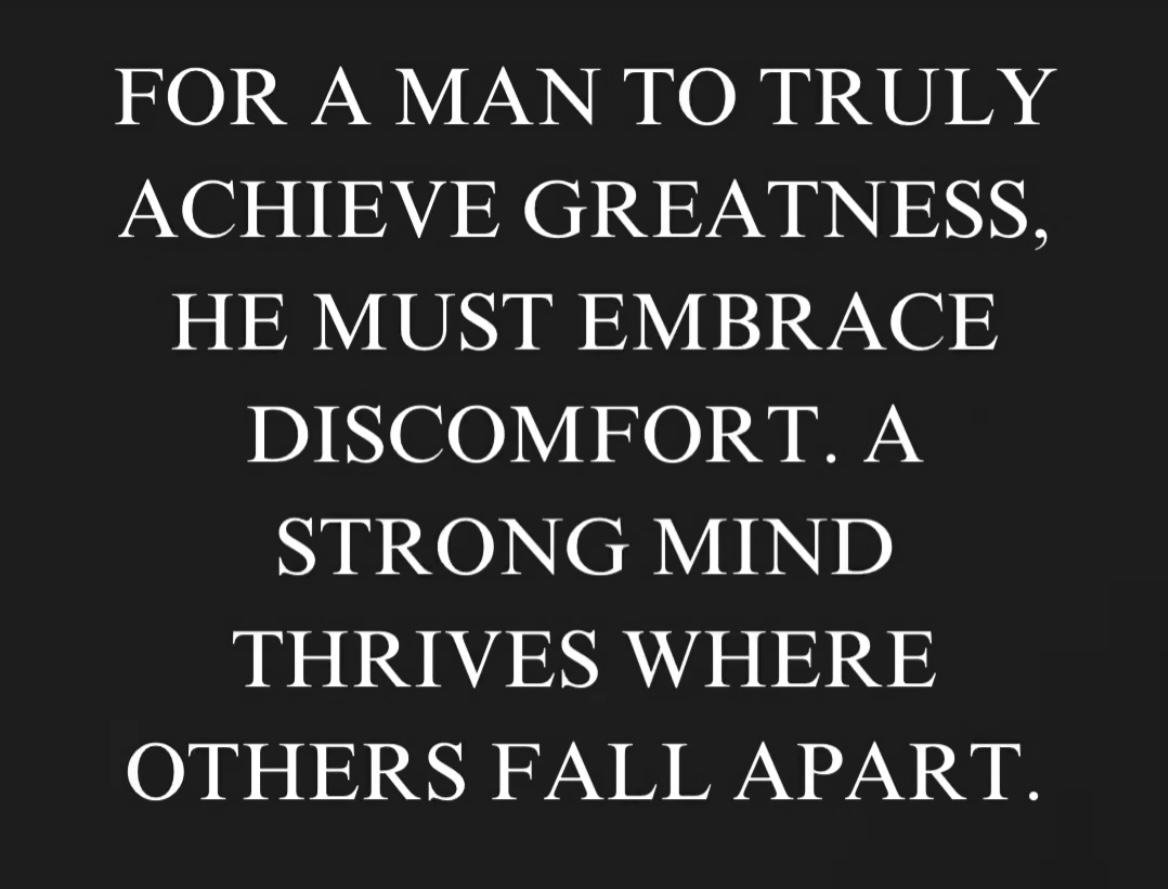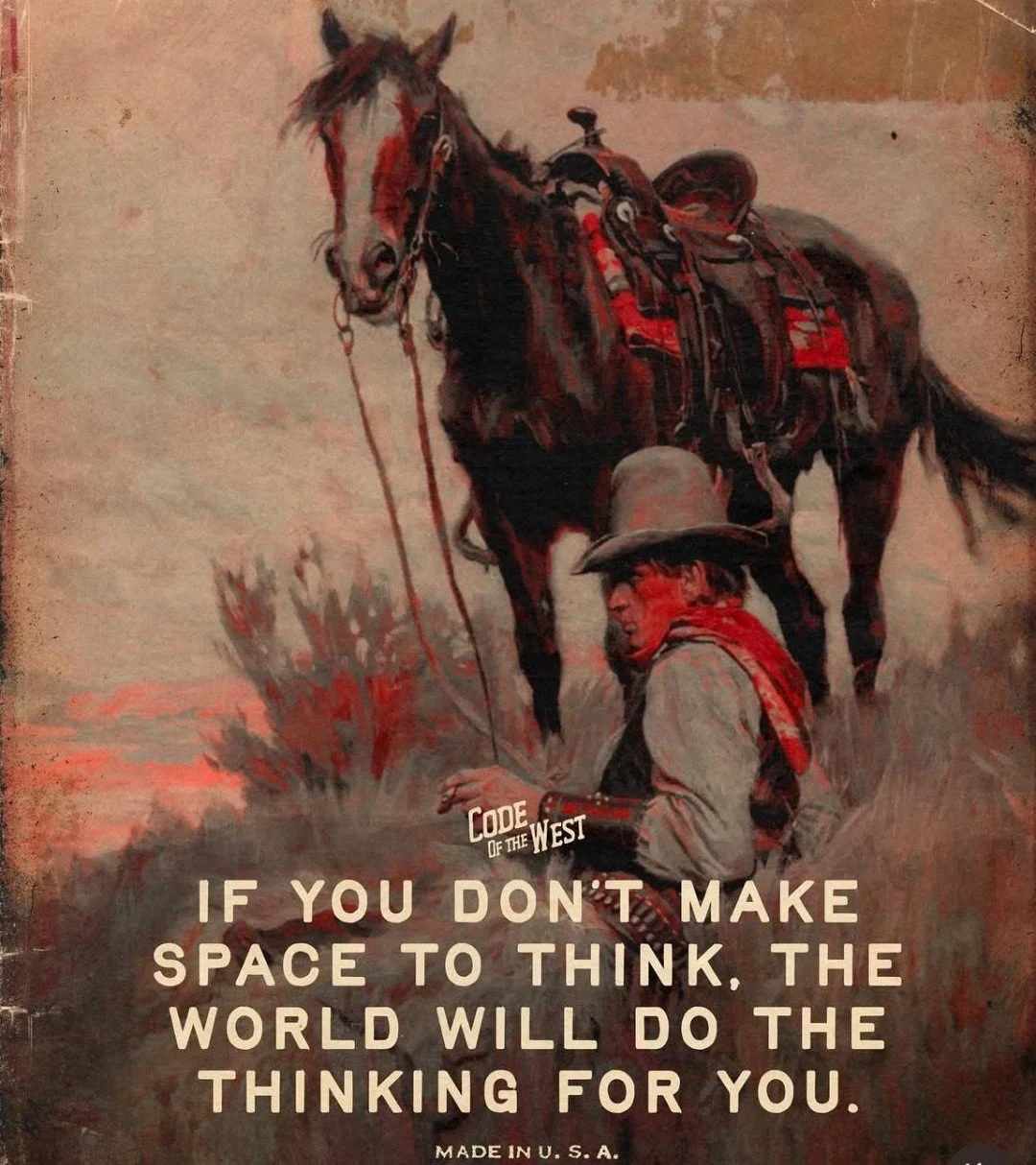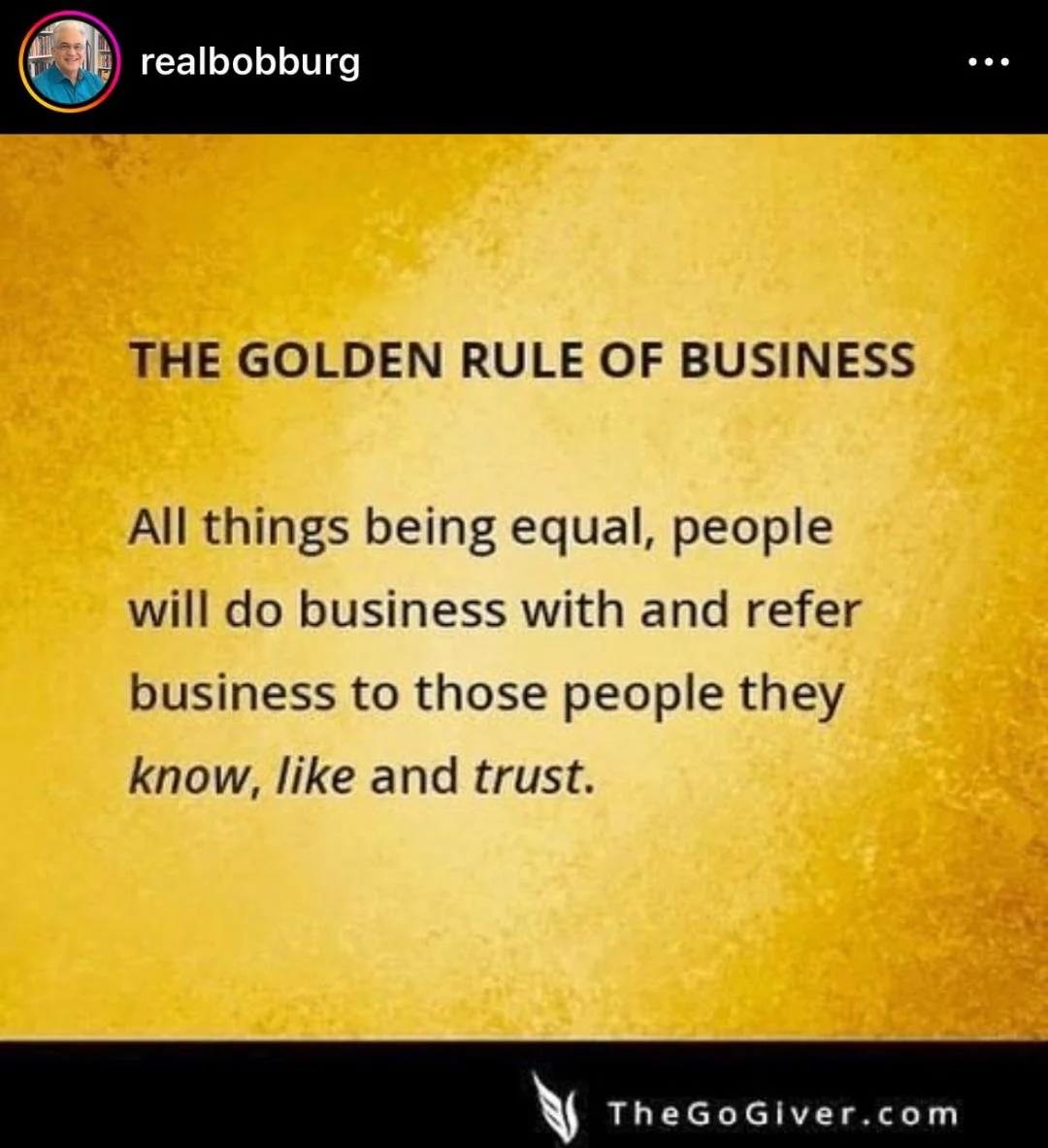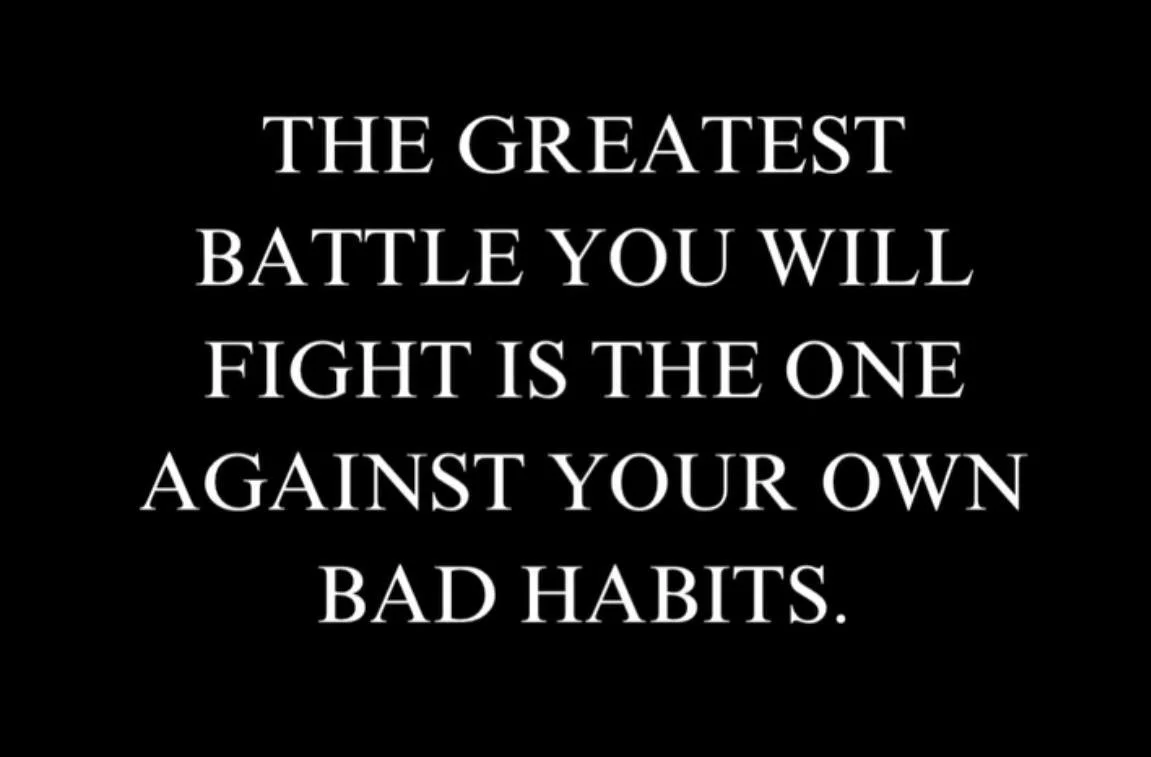
BLOG POSTS
The Scarred Face of Leadership: Why We Must Step Into the Arena
How often have you been in a meeting—maybe about a failed digital transformation project, a major system outage, or a key client churn—where the loudest voices belonged to those who were never actually accountable for the outcome? You know the scenario: the armchair quarterback ready to dissect every mistake, having never been under fire themselves. It's a frustrating dynamic that poisons the growth and strategic daring essential for any scaling SMB or mid-market organization. As leaders in Client Success and Information Systems, we are constantly faced with immense complexity, finite resources, and the relentless pressure to deliver. The question isn't whether we'll fail, but how we'll respond when we do.
The True Measure of Professional Leadership
For those of us working at the nexus of technology (IT/IS) and customer retention (Client Success), our daily reality is the high-stakes 'arena.' We don't get the luxury of theoretical debates; we are focused on deploying systems, protecting data, securing adoption, and ensuring our technology directly translates into client value and operational efficiency. When the network goes down or a key integration fails, it's our team's face that is marred by the proverbial dust and sweat.
In this environment, success isn't defined by the absence of problems, but by the relentless commitment to solving them. We must deliberately cultivate a culture where the effort—the striving—is honored above the outcome alone, and where strategic risk-taking is encouraged, not penalized.
Escaping the Critic's Circle
The biggest threat to high-performing teams isn't technical debt; it's leadership cowardice—the retreat into process paralysis or a fear of making the difficult, often unpopular, decision. Strategic leaders understand that significant achievement requires significant exposure to risk. They also recognize that fostering a climate of external critique without internal support stifles innovation and trust.
When a major initiative stalls, the focus of strategic leadership should not be on assigning blame, but on deconstructing the failure for maximal learning and rapid correction.
This mindset is perfectly captured by Theodore Roosevelt in his famous 1910 address, "Citizenship in a Republic":
"It is not the critic who counts; not the man who points out how the strong man stumbles, or where the doer of deeds could have done them better. The credit belongs to the man who is actually in the arena, whose face is marred by dust and sweat and blood; who strives valiantly; who errs, who comes short again and again, because there is no effort without error and shortcoming; but who does actually strive to do the deeds; who knows great enthusiasms, the great devotions; who spends himself in a worthy cause; who at the best, knows in the end the triumph of high achievement, and who at the worst, if he fails, at least fails while daring greatly, so that his place shall never be with those cold and timid souls who neither know victory nor defeat." (Theodore Roosevelt, "Citizenship in a Republic," delivered at the Sorbonne, Paris, April 23, 1910)
Moving from Manager to Arena Leader
As senior managers and leaders in technology and client-facing roles, this quote is our professional mandate. To lead strategically and build enduring relationships, you must:
Prioritize Action Over Perfection: Recognize that the IT landscape in scaling businesses is too dynamic for perfect planning. You must empower your people to make high-quality, high-velocity decisions, even if they occasionally lead to a misstep. The strategic cost of inaction always outweighs the cost of an informed mistake.
Model Resilience and Vulnerability: Your team needs to see you in the arena, too—not just observing from the skybox. When a project goes sideways, your emotional intelligence and non-verbal cues matter most. Do you convey panic and frustration, or do you convey calm resolve and an unshakeable focus on the next step?
Build Professional Trust through Support: The highest form of professional relationship building is the unwavering commitment to supporting your team after a failure. Strategic leaders absorb the organizational pressure and shield their doers, ensuring that the necessary post-mortem learning is conducted without the distraction of punitive scrutiny.
In the fast-moving, high-pressure world of mid-market technology and client success, we must be the people who "spend themselves in a worthy cause." Our strategic value is determined by our willingness to step into the fray, face the complexity, and stand beside our teams when they are striving valiantly—dust, sweat, and blood included.
What's Your Arena?
What critical, high-stakes project is your team currently tackling, and how are you ensuring they feel supported enough to "fail while daring greatly"?
The Leader's Blind Spot: Assembling Our Own Biases
The Leadership Challenge: Falling in Love with Our Own Creations
Have you ever been deeply involved in deploying a complex system, architecting a new client success process, or overhauling an entire IT infrastructure, only to find yourself irrationally protective of the final result? Even when the system is clunky or the process inefficient, there's a pull to defend it simply because you and your team poured months of effort into its creation.
This sentiment is rooted in a well-documented cognitive bias known as the "IKEA Effect": the psychological phenomenon where we place a disproportionately high value on things we have created or contributed to. While this may be a harmless quirk when assembling flat-pack furniture at home, in the high-stakes world of enterprise IT and Client Success, this cognitive attachment becomes a strategic blind spot. It prevents leaders from objectively assessing performance, inhibiting the brutal honesty required for digital transformation and sustained client health.
The Stifling Grip of Attachment in Technical Organizations
When you, as a leader, or your high-performing technical team, builds something from the ground up—be it a scalable SaaS platform, a security framework, or a core client integration workflow—the natural inclination is to fall in love with it. This emotional tie can manifest in three critical ways that hinder organizational agility:
1. The Erosion of Objective Critique (Groupthink)
The team that built the product often shares a deep, collective investment in its success. This "we built this" mentality fosters a subtle form of groupthink. It creates an unspoken agreement to overlook technical debt, dismiss legitimate external feedback from users or clients, and resist fundamental changes that threaten the original architecture.
For leaders, this means you are failing to cultivate a culture where the team feels safe and empowered to challenge their own work. In technology, where the rate of change is exponential, an inability to objectively self-critique the very structure you built is a direct path to obsolescence and competitive disadvantage.
2. The Trap of Controlling the Detail (Micromanagement)
A deep, personal connection to a project often fuels the belief that no one else can care for it as much as you do. This leads directly to micromanagement—a reluctance to delegate and an urge to control every detail, from high-level strategy down to the smallest implementation logic.
This behavior, driven by attachment, stifles the creativity, growth, and autonomy of your senior contributors. It sends a clear non-verbal cue that you do not trust their competence or judgment. This ultimately pushes away valuable talent and limits the scalability of the very system or process you are trying to protect. Strategic leaders must transition from being the doer to being the enabler and accountability partner.
3. Professional Relationships Built on Validation, Not Truth
When your attachment to a system is visible, it subtly pressures team members to validate your creation rather than speak the necessary, objective truth. This is a breakdown of professional relationship building. True leadership and mutual respect are built on the ability to have candid, data-driven conversations about failure and inadequacy without fear of emotional reprisal.
The Path to Strategic Detachment
To overcome the 'IKEA Effect,' leaders must first admit their susceptibility to it. The strategic imperative is to intentionally separate your identity and ego from the work produced. You can cherish the effort and commitment that went into the creation without allowing it to cloud your objective judgment regarding its future viability.
A great leader knows when to be the visionary and when to be the objective, dispassionate critic.
Consider implementing a structured approach:
Establish a "Break It" Culture: Formally assign a rotation of seasoned contributors or a specialized "Red Team" whose singular mandate is to intentionally find flaws, inefficiencies, and ways to "break" the system or process. This externalizes the critical function and legitimizes honest critique.
Insist on Data-Driven Accountability: Anchor every performance review, project retrospective, and strategic pivot in objective metrics—client adoption rates, system efficiency, ROI, or churn metrics. Data cuts through emotional attachment.
Empower Ownership, Not Just Tasks: Delegate genuine ownership over entire functions or modules. By fostering a culture where others are fully accountable for the success and failure of a component, you transform your personal investment from a bias into a powerful catalyst for continuous, distributed improvement.
By leading the way in professional detachment and fostering a culture of rigorous, constructive feedback, you ensure that your organization remains agile, innovative, and focused squarely on delivering maximum client and business value, not on protecting past effort.
What is one piece of technology or a process in your organization that you suspect your team has an unhealthy emotional attachment to, and what objective metric could you introduce this week to challenge that bias?
The Leadership Crucible: Why Comfort is the Enemy of Greatness
In the volatile landscape of enterprise Information Technology and Client Success Management, a pervasive myth distracts even the most seasoned professionals: that the path to operational greatness is paved with smooth transitions, optimized processes, and minimal friction. This is a profound and strategic misdirection.
For the senior leader or seasoned individual contributor operating at the nexus of technology and business outcomes, the most significant leaps—the enduring competitive advantages—are not forged in the absence of struggle, but in its very core. The pursuit of greatness is not about avoiding discomfort; it is about the deliberate and strategic seeking of friction, for it is only in that crucible of challenge that the resilient, strong mind required for digital transformation and scale is forged.
The True Nature of Professional Discomfort
In our world, discomfort is rarely physical. It is the intellectual and emotional weight of high-stakes situations:
The pivotal, challenging conversation with an executive stakeholder whose vision is misaligned with the technical reality of the roadmap.
The humility and strategic courage required to admit a multi-million-dollar technology bet must be scrapped and course-corrected.
The unrelenting cognitive load of maintaining composure and critical thinking during a system-wide incident or a market-disrupting pivot.
The necessary confrontation of a long-standing, inefficient process that is culturally entrenched within the organization.
These moments are not obstacles to be lamented; they are the critical stress tests that force the retirement of obsolete habits and demand a level of resilience that cannot be simulated. By willingly stepping into these high-pressure, uncomfortable situations, the leader reclaims their strategic agency and proves that their capacity to lead through complexity is unlimited.
Building the Strong Mind: A Strategic Imperative
The concept of a "strong mind" is not a personality trait; it is a developed, operational capability. It is the muscle built through consistent, disciplined action under duress.
The mind that can not only endure but thrive where others fall apart is not one that has dodged hardship, but one that has been strategically tempered by it. This is the ability to:
Maintain strategic clarity when operational chaos is at its peak.
Execute critical, unbiased decision-making when team morale is low or emotions are running high.
Exhibit the discipline to persist on a difficult strategic goal when the path of least resistance—quitting—is most tempting.
Tactics for Cultivating Strategic Resilience
For the leader focused on building this capacity for themselves and their organization, the action is deliberate:
Seek Out Uncomfortable Truths (The Strategy Audit): Actively establish channels for unvarnished, high-fidelity feedback—from executive peers, the operational floor, and key clients. Unvarnished insight is not a personal critique; it is the prerequisite for genuinely corrective action and strategic alignment.
Embrace the "Hard Choice": When faced with a task that requires marginal effort versus one that demands a breakthrough in thinking or process, consistently choose the latter. This is how you build a reliable track record of strategic obstacle mastery.
Mandate Deliberate Reflection (The After-Action Review): Post-mortem a challenging project or failure, not to assign blame, but to extract systemic, repeatable lessons. Codify what was learned about yourself, the team’s operating model, and the underlying technical strategy.
Leading Through Friction to Achieve Scale
This personal commitment to intellectual discomfort has a profound, force-multiplying effect on the organization. A leader who visibly models this behavior creates a fundamental shift in team psychology. When you are transparent about the difficulty of a challenge and your strategic approach to overcoming it, you implicitly give your team permission to struggle without shame.
This organizational culture transforms failure from a liability into an invaluable instructor, and ensures that systemic challenges are met with collective, determined problem-solving rather than individual fear or deflection.
Ultimately, the choice to embrace discomfort is a strategic investment in your long-term success and that of your technology function. It is a commitment to building a foundation of mental fortitude that will serve you through the next cycle of market disruption or digital transformation. By choosing the path of friction today, you secure your ability to lead with unwavering strength, clarity, and authority tomorrow. The most meaningful victories are not found by avoiding the struggle, but by winning the most difficult ones.
The Scarcity Principle: How Giving Away Control Creates Unstoppable Teams
How many times have you been in the middle of a critical client incident—a system down, a deadline missed—and found yourself thinking, "If I could just delegate this whole mess to my top expert and get out of their way?"
It's a common dilemma in the SMB and enterprise world, particularly across Client Success and IT. We hire brilliant, highly compensated technical professionals to solve complex problems, yet our organizational structures often incentivize micromanagement and bottlenecks, effectively stifling the very expertise we sought out. The result? Slow-moving teams, burnt-out leaders, and a frustrating dependence on hierarchy when agility is what the client demands.
The true secret to organizational resilience and sustained innovation isn't in building thicker SOPs or tighter controls; it's in a counterintuitive act of strategic surrender—releasing control to empower the talented people on your team.
The Engine of Innovation: Necessity & Autonomy
To understand how to build resilient teams, we must look to the bedrock of human ingenuity. Our most reliable driver of progress is not comfort or abundance; it is challenge.
The timeless adage, "Necessity is the mother of invention," encapsulates this truth. Though often misattributed, the phrase traces back at least to the ancient Greek philosopher Plato, who used it in The Republic (c. 380 BC) to describe the original motive for establishing a state: people come together in a society because they are not self-sufficient and need one another to survive. In a business context, this means that a pressing problem—a client crisis, a security threat, or a competitive gap—is the most potent catalyst for creative solutions.
As leaders, your responsibility is to create the conditions where your team owns the necessity of solving the problem. Instead of providing the answer, provide the challenge, the resources, and the authority to conquer it. When you trust your engineers, CSMs, and analysts with real stakes, you unlock invention.
The Strategic Surrender: Treating People Well
This concept of empowering invention is only effective when paired with a leadership style built on trust and respect. Why train your people into market-ready experts only to have them leave? The answer lies in the leadership and cultural foundation you build.
The renowned business magnate Sir Richard Branson articulated this philosophy succinctly: "Train people well enough so they can leave, treat them well enough so they don’t want to." This is a powerful, emotionally intelligent mandate for every senior leader in Technology and Client Success.
The context is simple: investment in people—through rigorous training, continuous development, and exposure to cutting-edge tools—is a non-negotiable cost of doing business. But retention isn't bought with training; it’s earned with culture. When your teams feel valued, respected, and entrusted with meaningful work, the need to seek opportunity elsewhere diminishes.
The Leadership Mandate: Get Out of the Way
For those of us leading complex, mission-critical teams, the final piece of the puzzle is the most difficult: letting go.
Branson expands on his retention philosophy with a practical mandate for autonomy: "We look for staff with a passion for people. We give them the tools to do the job, and then we get out of the way. Trust your people to do the right thing."
This is not a policy; it’s a strategic decision that shifts the focus from managerial supervision to enabling success. In high-stakes environments like enterprise IT and Client Success Management, you simply do not have the time to audit every decision. Your competitive edge is the speed and quality of your team's on-the-ground response.
The best leaders I've worked with—including the senior leadership team at Dun & Bradstreet supporting the Technology, Media, and Telecom (TMT) CSM Team—have mastered this art. They act as a force multiplier, providing the necessary tools, cutting-edge training, clear strategic direction, and a rock-solid foundation of assistance. They don't micromanage how a CSM resolves a platform integration issue or how an engineer deploys a critical patch; they simply ensure the team has the ability and authority to do what is necessary.
Actionable Strategy for Your Leadership
Your most talented employees don't want to be told what to do; they want to be given the power to innovate under the pressure of necessity. They want a manager who equips them, points them at the problem, and then has the confidence to step back.
Challenge yourself this week: Identify one critical project and, instead of providing the solution, provide the "Necessity," and then explicitly communicate your trust and autonomy. Watch as your team steps up to be the brilliant inventors you hired them to be.
The scarcity principle works in leadership, too: the less you hoard control, the more innovation, ownership, and loyalty you receive in return.
A Look Into One Part of the Dichotomy of Leadership
I recently nearly tripped over a twist to a parable on self-mastery and self-control that caused me to pause and spend some time in contemplation. Here are some thoughts on the parable that I hope you find insightful.
The Two Wolves: A Deeper Look into Self-Mastery
One widely shared parable is the story of the two wolves, often attributed to the Cherokee. In it, an elder describes a fight between two wolves inside every person. One wolf represents negative qualities—anger, envy, ego—while the other represents positive qualities—joy, kindness, and compassion. When asked which wolf will win, the elder simply replies, “The one you feed.” This powerful story is a direct call to intentionality. It teaches us that we are not helpless observers of our inner world, but active participants who shape our character with every choice we make. In a leadership context, it’s a reminder that we choose to feed the wolf of integrity, empathy, and courage with our daily actions and decisions.
The Reality of the "Starving" Wolf
A lesser-known but equally profound version of the story adds a critical layer of wisdom. In this retelling, the grandson asks which wolf will win, and the elder responds, “If you feed them right, they both win.” He goes on to explain that starving the negative wolf doesn't eliminate it. Instead, it makes it angry, dangerous, and more likely to hide and ambush us when we are at our weakest. This version of the parable moves beyond simple choice and into the complex reality of self-management. It suggests that we can’t simply wish away our negative traits or emotions. True self-mastery is not about suppressing our shadows but about acknowledging, understanding, and integrating them. We can’t just feed our kindness; we must also find healthy ways to manage our anger, frustration, and fear, preventing them from festering and causing harm to ourselves and those in our care.
The Two Wolves in Leadership: A Case Study
The tension between these two parables is a real-life challenge for leaders. Consider two different historical approaches. One could argue that President John F. Kennedy's famous "Ich bin ein Berliner" speech, delivered with a sense of hope and solidarity, was an example of feeding the good wolf. He chose to amplify the message of freedom and alliance, empowering others through a vision of unity rather than fear. On the other hand, the legacy of someone like General Patton, known for his relentless drive and sometimes explosive temper, is an example of a leader who may have managed a "starving wolf." While his temper was a weakness, he often channeled that intense passion and aggression to achieve decisive military victories. He did not suppress the negative wolf, but rather, he harnessed its raw power for a greater good. The key is that he managed that power, rather than letting it run wild.
For us, the lesson is clear: your journey is not just about what you choose to become, but how you choose to manage all the parts of who you are. The most effective leaders do not deny their negative impulses; they understand them and prevent them from undermining their positive intentions. This dual approach to leadership, embracing both intentionality and self-management, is a step that puts us on the true path to wisdom.
The Unspoken Architecture of Leadership
If you are anything like me, you operate in an industry where precision, logic, and data reign supreme. Every digital transformation roadmap, every critical infrastructure decision, and every budget proposal is meticulously engineered for optimal outcome. Yet, here is the pressing challenge common to every large-scale technology organization: If our strategies are perfectly rational, why do our critical communications—the vendor negotiations, the board presentations, the team-wide pivots—so often fall short of their intended impact?
The truth is, while we focus intensely on what we say, the decisive competitive edge in enterprise leadership is often determined by how we say it and how we show up. The most brilliant strategic vision remains just a document until it is communicated with conviction and received with trust.
This realization led me to Cues: Small Signals, Incredible Impacts by Vanessa Van Edwards. This book is not about mere "soft skills"; it’s a critical read for any senior IT/IS professional who understands that leadership at our level is a high-stakes performance, where the smallest non-verbal signal can either forge trust or introduce crippling doubt.
Here is an executive summary of the cues that resonated most deeply with me and provided direct, actionable insight into elevating our day-to-day engagement with our teams and stakeholders:
Part I: The Strategic Presence – Leveraging "Power Cues"
In the environment of enterprise IT, presence is power—not the power of hierarchy, but the capacity to command attention, articulate certainty, and foster an environment where productive disagreement can thrive, leading to better decisions.
Power Cue #1: Powerful Posture
This is fundamental. Whether you are leading a $100M vendor negotiation or addressing the leadership team after a critical incident, your posture is the first piece of data the room processes. When we are defensive, uncertain, or disengaged, our body language contracts, signals low status, and invites questioning. Powerful Posture—open shoulders, an upright but relaxed frame, and occupying space—communicates competence and resilience. It signals to the room: “I am calm, I am confident, and I am in control of this conversation and the situation at hand.” This is paramount for establishing the psychological safety needed to move complex initiatives forward.
Power Cue #5: Palm Power
Effective leadership demands transparency and a commitment to moving past hidden assumptions. Van Edwards highlights how showing your palms—a gesture historically associated with demonstrating one holds no weapon—is a powerful cue for trust and openness. When you are presenting a solution or asking your team to commit to a difficult initiative, using open-palm gestures makes your delivery appear more honest and authentic. It is a non-verbal confirmation that your motivations are pure and your proposal is well-intended, significantly lowering the audience’s defensive barriers and encouraging buy-in.
Part II: The Vocal Architecture – Mastering "Vocal Cues"
The voice is the delivery mechanism for our strategy, yet many leaders have never truly trained this instrument. Now that remote and hybrid meetings are a constant, the vocal signal is often the only signal we transmit.
Vocal Power Cue #1: How to Sound Confident
Confidence in speech is less about volume and more about control and cadence. Confident speakers avoid "uptalk" (raising the pitch at the end of a statement, turning it into an unintentional question) and utilize strategic pauses. Pausing before a key point not only allows the information to land but also demonstrates self-assurance. It says, “I know what I am about to say is important, and I trust you will wait for it.”
Vocal Power Cue #3: Eliminate Vocal Fry...Forever
While a seemingly minor point, vocal fry (the low, creaky sound at the end of a sentence) disproportionately erodes credibility, particularly in high-stakes environments. It is often perceived, rightly or wrongly, as a sign of apathy, insecurity, or lack of gravitas. As senior leaders, we must be polished communicators. Eliminating this cue ensures that the focus remains on the strategic content and not the vocal distraction.
Vocal Power Cue #4: Volume Control Shows Emotional Control
When under pressure—be it a system outage or a contentious budget review—our natural tendency may be to raise our voice. However, the most emotionally controlled leaders master strategic volume control. A measured, steady volume conveys stability and strategic command. Furthermore, lowering your voice slightly at a critical juncture can force the listener to lean in, capturing their full focus and demonstrating that you are handling the pressure with calm authority.
Vocal Warmth Cue #1: Make a Memorable Vocal First Impression
Warmth is how we build trust. Your vocal first impression should convey that you are not just a technical automaton, but a human leader invested in solving a problem with your audience. This involves using an engaging pitch and a slightly faster-than-average pace to demonstrate enthusiasm, followed by a slight, strategic slowing to ensure clarity and gravity.
Vocal Warmth Cue #3: How to Sound More Interesting
Monotone delivery is the enemy of engagement, particularly when discussing complex technical roadmaps. To sound more interesting, employ vocal variety—changing your pitch, pace, and projection. Emphasize key data points or strategic imperatives with a slight drop in pitch and a deliberate pause. This variation ensures that your audience remains engaged and that your core message penetrates the noise.
The Charismatic Word Choice
Charismatic communication—in both verbal presentations and written executive summaries—is achieved by shifting from technical nomenclature to language that invokes vision and benefit. Instead of focusing on tool names or process steps, focus on the impact to the business, the value created, and the future state you are pursuing. Use powerful, evocative words to frame challenges as opportunities and operational shifts as strategic leaps. This helps you engage your audience not just on a logical level, but on an aspirational one, driving momentum toward organizational goals.
Call to Action
Effective leadership is about maximizing impact through deliberate execution. I highly recommend adding Cues: Small Signals, Incredible Impacts to your reading list. Master these small signals, and you will begin to observe the incredible impact on your ability to lead, persuade, and drive strategic outcomes across the enterprise.
Reclaiming the Executive Mind: The Strategic Imperative of Deliberate Thought
If you have worked in or around Enterprise IT and Technology like I have, you know the feeling. The velocity of change isn't just a business cliché—it’s the reality of a hundred urgent tasks hitting your inbox before 9 AM. We’re constantly pulled into that operational deluge: the endless data streams, the vendor calls, the fire-fighting escalations, and the demands of a market that’s always moving faster. Frankly, all that relentless reactivity is exhausting, and it’s the biggest threat we face to doing the actual strategic leadership work that matters.
We must internalize a fundamental truth: If you do not intentionally create space for strategic thought, the operation will do the thinking for you.
This is not a matter of personal time management; it is a critical business vulnerability. When senior technology leaders—the architects of the firm's future—cede their mental space to the immediate, they inadvertently surrender their agency. We become passengers in our own transformation journeys, reacting to crises rather than strategically charting the course.
The Cost of Cognitive Surrender in Enterprise IT
Neglecting this vital space has measurable consequences on execution and strategic momentum:
Erosion of Strategic Foresight: Instead of anticipating platform shifts, security risks, or competitive disruption, the focus becomes the next sprint or patch. We lose the ability to connect disparate signals across the enterprise and market, which is the bedrock of proactive risk mitigation and long-term architecture planning.
The Trap of External Narratives: The industry is flooded with narratives—the latest "must-have" technology, the loudest vendor, the prevailing best practice. Without deliberate thought to critically evaluate these against our unique business context, they become our agenda. We risk adopting solutions without questioning their true efficacy, scalability, and alignment with our core business strategy.
Decisional Drift and Execution Lag: Unconscious drift replaces conscious decision-making. Strategic initiatives stall, not from a lack of resources, but from a deficit of clear, unbiased, and integrated thought at the top. The organization senses this lack of clarity, leading to ambiguity, wasted effort, and delayed delivery of business value.
Stifled Cross-Functional Innovation: True innovation—the kind that moves the needle on shareholder value—emerges when complex problems are processed without the pressure of immediate operational fire-fights. Busyness chokes the incubation of novel ideas and the ability to synthesize technological capability with business need.
The Executive Imperative: Cultivating Deliberate Space
Creating this cognitive space is not a luxury afforded to leaders; it is a fundamental requirement of the role. It is the deliberate act of stepping back from the operational noise to engage in strategic, critical, and objective thought.
This practice enables you to:
Reassert Strategic Agency: You gain the clarity to pause, assess the system and market environment, and consciously decide the optimal path forward, moving from operational reaction to strategic shaping.
Drive Clarity and Objectivity: You separate the noise of emotion and immediate crisis from the facts required for sound decision-making, ensuring that decisions serve the long-term health of the platform and the business.
Identify Critical Leverage Points: You can move past mere task completion to focus on the handful of high-leverage decisions that will unlock significant future growth or efficiency, a hallmark of effective executive leadership.
Practical Mechanisms for Strategic Recalibration
Making space to think must be integrated into your operating rhythm, not treated as an off-site retreat. Consider these actionable mechanisms:
Mandatory Reflection Blocks: Schedule non-negotiable time blocks—weekly, if not daily—for "Deep Work" with zero external input. Use this time not to do tasks, but to question the priorities, stress-test assumptions, and re-evaluate the strategic trajectory.
The "Three Whys" Challenge: Before approving any significant investment or initiative, challenge your team (and yourself) by asking: "Why are we doing this now?" followed by two more iterations of "And why is that the case?" This disciplined questioning cuts through surface-level rationales to reveal core dependencies and hidden flaws.
Mindful Disconnection: Intentionally step away from the tools of connectivity. A short walk without your phone or 15 minutes of silent contemplation forces the mind to process, integrate, and connect disparate technological and business threads without immediate interruption.
The world—the constant operations, the market demands, the internal noise—will always be eager to absorb your executive bandwidth. Your most valuable, non-renewable resource is your capacity for uninterrupted, strategic thought.
As a leader, what specific, non-negotiable block of time will you commit to reclaiming your strategic mind this week?
The Science of Succeeding with People: From Inception to Influence
It’s been a while since I shared my thoughts on a book I've read, but I recently picked up one that truly captivated me. After listening to a great podcast conversation between Dr. Jordan B. Peterson and Vanessa Van Edwards, I was inspired to read her book, Captivate: The Science of Succeeding with People. This post is a reflection on what I gained from that reading experience and the three key takeaways that have stuck with me the most. I’ll be sharing more about her other book, Cues, in a future post.
Have you ever left a conversation feeling like you just missed the mark? Or struggled to understand what was really motivating a difficult colleague or team member? Social dynamics can feel like a complex puzzle, but what if you could learn to read the room and communicate with purpose? One of the biggest lessons I took from this book is that social success isn’t a magical, inborn talent; it’s a science. By understanding a few core principles, you can begin to navigate conversations and relationships with greater confidence and influence.
Takeaway 1: Your Ability to Connect Begins with Reading People
One of the most powerful concepts I encountered was the idea of using the Big 5 personality traits as a framework for understanding others. The book opened my eyes to how much my ability to connect with someone improves when I can observe what makes them tick. I've found it incredibly helpful to consider these five areas when I meet someone new or engage with a team member:
Openness: Are they open to new ideas, abstract concepts, and unconventional thinking, or do they prefer tradition and concrete facts? Adjusting your pitch accordingly can make all the difference.
Conscientiousness: Do they value structure, order, and detailed plans, or are they more spontaneous and flexible? Now, I recognize that a highly conscientious person will appreciate a well-organized presentation much more than someone who is not.
Extroversion: Do they get energy from being around others? Do they enjoy lively group discussions and thrive in the spotlight, or do they prefer quiet, one-on-one interactions? This helps me choose the right setting for a conversation.
Agreeableness: How much do they prioritize harmony and cooperation? I've learned that someone who is highly agreeable will be more receptive to proposals that benefit the whole team.
Neuroticism: Do they tend to worry, stress, or experience emotional instability? Understanding this trait has helped me approach sensitive topics with greater care and empathy, providing a sense of stability.
By observing these tendencies, you can move from guessing what people need to genuinely understanding them.
Takeaway 2: Your Belief is a Superpower
As a leader, your perception of others isn’t just a passive observation; it’s a powerful tool. The concept of the Pygmalion Effect was a huge "aha" moment for me. The book explains this scientific principle: when you hold a strong, positive belief in someone’s potential, that belief can actually influence their performance. When you expect great things from a team member, you subconsciously provide them with more opportunities, better feedback, and increased support. They, in turn, feel a sense of confidence and rise to meet your high expectations. I've realized that I'm not just seeing their potential; I'm actively helping them realize it.
What belief are you currently holding about a team member, and how might it be impacting their performance?
Takeaway 3: A Simple Framework for Difficult Conversations
One of the most practical tools I took away was a simple, three-step framework for handling difficult conversations, which Vanessa Van Edwards calls the NUT Job:
N - Name the Emotion: I've started practicing this. First, you name what the other person is feeling. Phrases like, "It sounds like you're feeling frustrated," or "I sense you're concerned about this," can show you are listening and help de-escalate the situation.
U - Understand What They Want: Next, you work to understand what the person is really seeking. Behind the anger or frustration is usually a need for control, validation, or certainty. Asking questions helps get to the root of their request.
T - Transform: Finally, you transform the situation by offering what they actually need. If they are seeking control, offer them a choice. If they need validation, acknowledge their concern. This shifts the dynamic from a conflict to a collaborative effort to find a solution.
This is just a glimpse into the science of human connection. The ideas presented here are based on decades of research and are just a few of the many powerful lessons I took away from reading Captivate: The Science of Succeeding with People. If you're ready to master your social interactions and become a more influential and authentic leader, I highly recommend picking up a copy and discovering how to truly connect with everyone you meet.
The Unseen Currency of Leadership: Know, Like, and Trust
In the modern business landscape, do you find yourself focusing on metrics, market share, and technological innovation as the ultimate measures of success? Yet, beneath the surface of every groundbreaking deal, every successful project, and every career ascent lies a more enduring and powerful currency: the strength of human relationships. As this timeless principle suggests, "All things being equal, people will do business with and refer business to those they know, like, and trust." For senior-level professionals, this isn't a quaint business maxim—it is the very foundation of your strategic influence and sustained success, and it is the key to building a career of true significance.
The first two pillars, knowing and liking, are often the entry point. To be known is to have a presence—to be visible, to build a reputation for competence, and to make your expertise apparent. This isn't about passive observation; it is about deliberate engagement and active contribution. Liking, however, goes deeper. It's about shared values, authentic interactions, and a genuine rapport that transcends a purely transactional relationship. It's the moment when a professional colleague becomes a trusted confidant, when a client feels you are truly a partner, and when your team feels you are an advocate for their success.
The third pillar, trust, is the ultimate differentiator. Trust is built through consistency, integrity, and proven competence. It's the result of doing what you say you will do, of making sound decisions even when they are unpopular, and of demonstrating unwavering reliability over time. When you are trusted, you move beyond the confines of your formal title. You become a go-to advisor, a valuable asset, and a magnet for opportunity. In an environment where products and services can feel like commodities, trust is the competitive advantage that cannot be easily replicated. It reduces friction, accelerates decision-making, and creates a virtuous cycle of collaboration and referral.
How do you actively build trust, and what would your colleagues say about your consistency and integrity?
For senior leaders or seasoned individual contributors, this principle must be an active part of your strategy. This means moving beyond networking for the sake of networking. It means investing time in building bridges between departments, mentoring rising talent, and truly understanding the needs of your clients and colleagues. It is a commitment to cultivating a personal brand built not on what you do, but on who you are. This isn't about being a people-pleaser; it is about being a people-builder—someone who uplifts others and earns their respect and loyalty through genuine connection.
In what ways are you actively investing in others to cultivate your personal brand as a "people-builder"?
Ultimately, the ability to build and sustain genuine relationships based on knowing, liking, and trusting is a non-technical skill that will outlast any technological trend or market shift. In a world of increasing automation and rapid change, human connection remains irreplaceable. Success can be measured in titles and earnings, but significance is measured by the impact you have on the lives and careers of others. By mastering the art of building these strategic relationships, you solidify your influence, secure your professional reputation, and, most importantly, create a legacy that extends far beyond the bottom line.
The Toughest Opponent is in the Mirror
In a world defined by constant disruption and competitive pressures, do you often find yourself looking outward for the next great challenge? You strategize to outmaneuver a rival, innovate to capture market share, or build a team to tackle a monumental project. Yet, what if the most formidable and consequential battle you will ever face is not found in the marketplace, but within yourself? What if it's the quiet, persistent war against your own bad habits? For senior professionals—whether you are an individual contributor or a leader—recognizing this truth is the first step toward unlocking a new level of strategic influence and personal growth.
These habits aren't always grand, dramatic flaws. They are often subtle, deeply ingrained patterns that have served you in the past but now hinder your progress. Could it be the reliance on reactive decision-making instead of proactive planning? The habit of micromanagement that stifles your team’s autonomy? Or the unconscious tendency to avoid difficult conversations? You can spend a career refining external skills and mastering technical competencies, only to be held back by an internal inertia. The true test of a senior professional is not just your ability to solve external problems, but your capacity for radical self-awareness and the courage to confront the behaviors that no longer serve you.
For a leader, this internal battle has an amplified effect. Your habits—good or bad—become the cultural norms of your team. A leader who consistently operates in a reactive mode trains those they lead to live in a state of crisis. A leader who fails to delegate effectively communicates a lack of trust, which erodes morale and limits the growth of those in their care. The discipline to break a bad habit is a powerful, non-verbal message to your team. It demonstrates vulnerability, a commitment to continuous improvement, and the accountability that is a hallmark of truly effective leadership. By modeling this behavior, you not only improve yourself but also create a safe environment where your team members feel empowered to undertake their own journeys for self-improvement.
What habits are you modeling for your team right now, and what message are they sending?
Conquering these habits requires more than mere willpower; it demands a strategic approach. It starts with a clear-eyed assessment of the behaviors that are undermining your effectiveness. This might mean inviting honest feedback, journaling to identify patterns, or simply dedicating time to quiet reflection. The next step is to create a new system, not just a new resolution. Rather than simply resolving to "stop procrastinating," what if you built a system of structured work blocks with incremental steps and clear breaks? Instead of vowing to "be a better communicator," what if you scheduled dedicated one-on-one time with your team where the only goal is open dialogue? Small, consistent actions build new neural pathways that eventually replace the old, limiting habits.
What system could you create this week to begin replacing one of your old habits?
Ultimately, the fight against your own bad habits is not a one-time event but a continuous process of self-refinement. In a fast-paced business environment, the ability to adapt is a prerequisite for success. This adaptability begins with the willingness to adapt yourself—to discard the comfortable but ineffective habits of the past and embrace a new way of operating. It's a journey that builds resilience, hones judgment, and solidifies your reputation as a leader who not only guides others but is also in command of themselves.










